Code
HCS27476
Weight
3 Kg / 6.61 lbs
Size
Height
6cm (2") Width
3cm (1") Depth
2cm (1") Material
Copper
Availability
Available

Safe Payment
We accept Paypal, Money Transfer, Bank Transfer
Confidence
Protection covers your purchase and personal data.
Worldwide Delivery
We ship Worldwide, except Russia.Shipping cost US$25.2 for upto 0.5 kgs

Hotline
Talk to help line for your question on 9841267335Yellow Jambhala : Brief Introduction
Jambhala (also known as Dzambhala, Dzambala, Zambala, or Jambala) is the God of Wealth and appropriately a member of the Jewel Family (see Ratnasambhava). He is sometimes equated with the Hindu deity Kubera. Jambhala is also believed to be an emanation of Avalokitesvara or Chenrezig, the Bodhisattva of Compassion. There are five different wealth Jambhalas; each has its own practice and mantra to help eliminate poverty and create financial stability.
Gyalten Sogdzin Rinpoche said that Jambhala is the protector of all Lineages and of all sentient beings from all sickness and difficulties. Jambhala is a Bodhisattva of material and spiritual wealth as well as many other things, especially of granting financial stability.
Because in this world, there are all kinds of wrathful and negative emotions or bad spirits, and sometimes they will harm you and other sentient beings, Dzambhala must take on such a wrathful and powerful form to protect us from these harmful spirits and negative karma. Especially, Dzambhala helps us minimize or decrease all misfortunes and obstacles and helps us increase all good fortune and happiness. Read More . . .
Jambhala (also known as Dzambhala, Dzambala, Zambala, or Jambala) is the God of Wealth and appropriately a member of the Jewel Family (see Ratnasambhava). He is sometimes equated with the Hindu deity Kubera. Jambhala is also believed to be an emanation of Avalokitesvara or Chenrezig, the Bodhisattva of Compassion. There are five different wealth Jambhalas; each has its own practice and mantra to help eliminate poverty and create financial stability.
Gyalten Sogdzin Rinpoche said that Jambhala is the protector of all Lineages and of all sentient beings from all sickness and difficulties. Jambhala is a Bodhisattva of material and spiritual wealth as well as many other things, especially of granting financial stability.
Because in this world, there are all kinds of wrathful and negative emotions or bad spirits, and sometimes they will harm you and other sentient beings, Dzambhala must take on such a wrathful and powerful form to protect us from these harmful spirits and negative karma. Especially, Dzambhala helps us minimize or decrease all misfortunes and obstacles and helps us increase all good fortune and happiness. Read More . . .
Samantabhadra : An Introduction to Samantabadra
The image of Samantabhadra is one of the oldest & among the most complex Buddhism, because of its simplicity & because the figures bear no symbolic objects (accoutrements) which otherwise define the form. Yet most people realise that there is some profound underlying meaning behind the form. The represents the realisation & flowering of pure consciousness. Owing to its simplicity, there are several Samantabhadra interpretations & meanings attached to the form.
The central concepts regarding the image
1. The original self which is perceived a pure awoken consciousness [Skt. bodhi]. The Awoken self [viz. spiritual nature] which realises the delusion of the material world which is the common perception of reality & in doing so is liberated.
1b.Understanding of the sun & moon, which themselves represent time {place} & the human condition respectively.
2a. The eternal Present moment which from the Awoken Mind of bodhi realises the union of the past, present & future.
3. The origin of all form out of which all form is derived & within to which all form dissolves into Nothingness. The nature of truth of reality, explored by the Buddhist Early Schools. These two leading schools are Sunyavada [aka. Madyamanka] & Yogacara. The realisation of the this truth of reality generates the Boddhi-sattva [the enlightened being of 'pure consciousness'.
4. According to Vajrayana Buddhism all Deities & Dakinis arose out of Samantabhadra. This idea is especially connected ot the Dhyana Buddha Familiies of Amitabha, Akshobhya, Amoghasiddhi, Ratnasambhava & Vairochana 5. Bodhissatva & figure of the Lotus Sutra [Skt. Avatamsaka Sutra] made the 10 vows to guide a bodhisattva. Read More . . .
The image of Samantabhadra is one of the oldest & among the most complex Buddhism, because of its simplicity & because the figures bear no symbolic objects (accoutrements) which otherwise define the form. Yet most people realise that there is some profound underlying meaning behind the form. The represents the realisation & flowering of pure consciousness. Owing to its simplicity, there are several Samantabhadra interpretations & meanings attached to the form.
The central concepts regarding the image
1. The original self which is perceived a pure awoken consciousness [Skt. bodhi]. The Awoken self [viz. spiritual nature] which realises the delusion of the material world which is the common perception of reality & in doing so is liberated.
1b.Understanding of the sun & moon, which themselves represent time {place} & the human condition respectively.
2a. The eternal Present moment which from the Awoken Mind of bodhi realises the union of the past, present & future.
3. The origin of all form out of which all form is derived & within to which all form dissolves into Nothingness. The nature of truth of reality, explored by the Buddhist Early Schools. These two leading schools are Sunyavada [aka. Madyamanka] & Yogacara. The realisation of the this truth of reality generates the Boddhi-sattva [the enlightened being of 'pure consciousness'.
4. According to Vajrayana Buddhism all Deities & Dakinis arose out of Samantabhadra. This idea is especially connected ot the Dhyana Buddha Familiies of Amitabha, Akshobhya, Amoghasiddhi, Ratnasambhava & Vairochana 5. Bodhissatva & figure of the Lotus Sutra [Skt. Avatamsaka Sutra] made the 10 vows to guide a bodhisattva. Read More . . .
Manjushri : Brief Introduction
Manjushree is a Sanskrit word meaning 'gentle glory'. In Sanskrit, "shree" means 'glorious' or 'honorable'. His name signifies one who embodies enlightened wisdom. He confers mastery of the Dharma, wisdom, and eloquence and teaches the path of a bodhisattva in the Mahayana tradition. Read More . . .
Manjushree is a Sanskrit word meaning 'gentle glory'. In Sanskrit, "shree" means 'glorious' or 'honorable'. His name signifies one who embodies enlightened wisdom. He confers mastery of the Dharma, wisdom, and eloquence and teaches the path of a bodhisattva in the Mahayana tradition. Read More . . .
Vajrasattva : Brief Introduction
Vajrasattva is also regarded as Adi-Buddha by Nepalese Bajracharya's who follow Vajrayana tradition according to the text Vajrasattva Kaya. His body is white with one face and two hands. His right-hand holds a five-pronged golden vajra at his heart. His left-hand holds a silver bell at his side. He sits in the Vajraparyanka posture wearing precious silks and ornaments with jewel diadem. His body is adorned with the major and minor marks of a Sambhogakaya and emits a clear limitless light. It appears to lack all notion of substantiality, like the reflection of the moon in the water.
Vajrasattva has a father-mother aspect too. Generally, this form is not exhibited in open. It is shown only to those who are initiated in the Highest Yoga Tantra. His form is the same as in the single one but his consort carries a Kartika in her right hand and a kapala in her left hand. Read More . . .
Vajrasattva is also regarded as Adi-Buddha by Nepalese Bajracharya's who follow Vajrayana tradition according to the text Vajrasattva Kaya. His body is white with one face and two hands. His right-hand holds a five-pronged golden vajra at his heart. His left-hand holds a silver bell at his side. He sits in the Vajraparyanka posture wearing precious silks and ornaments with jewel diadem. His body is adorned with the major and minor marks of a Sambhogakaya and emits a clear limitless light. It appears to lack all notion of substantiality, like the reflection of the moon in the water.
Vajrasattva has a father-mother aspect too. Generally, this form is not exhibited in open. It is shown only to those who are initiated in the Highest Yoga Tantra. His form is the same as in the single one but his consort carries a Kartika in her right hand and a kapala in her left hand. Read More . . .
Green Tara : Brief Introduction
Samaya Tara, popularly known as Green Tara. She is represented in a royal ease posture with her left leg bent her left leg overstepping the main lotus and resting on a blue lotus ready to get up and offer assistance to those in need. She is portrayed with maroon Buddhist robes and jewelry. The earrings represent patience, understanding, and renunciation. The diadem with five jewels represents the transmutation of the five delusions into the Five Buddha Wisdoms. She is shown with a benevolent countenance seated upon a white moon disk which is associated with special restorative nectar associated with the naval chakra center. In Buddhists, the moon symbolizes the wisdom aspect which when coupled with compassion leads to Sakyamuni Buddha's enlightenment. Her right hand is gracefully lowered in Varada mudra, the boon-granting gesture. Read More . . .
Samaya Tara, popularly known as Green Tara. She is represented in a royal ease posture with her left leg bent her left leg overstepping the main lotus and resting on a blue lotus ready to get up and offer assistance to those in need. She is portrayed with maroon Buddhist robes and jewelry. The earrings represent patience, understanding, and renunciation. The diadem with five jewels represents the transmutation of the five delusions into the Five Buddha Wisdoms. She is shown with a benevolent countenance seated upon a white moon disk which is associated with special restorative nectar associated with the naval chakra center. In Buddhists, the moon symbolizes the wisdom aspect which when coupled with compassion leads to Sakyamuni Buddha's enlightenment. Her right hand is gracefully lowered in Varada mudra, the boon-granting gesture. Read More . . .
White Tara : Brief Introduction
White Tara is a revered figure in Buddhist mythology, often depicted as a compassionate and serene goddess. She embodies peace and emanates loving compassion, bringing grace and dignity to various situations. White Tara's presence encourages the emergence of goodness and positive outcomes in all circumstances. She upholds the Four Measureless States, which include Loving Kindness, Compassion, Sympathetic Joy, and Equanimity, encompassing past, present, and future circumstances. Additionally, White Tara is associated with the bestowing of longevity, symbolizing a long and healthy life. Her essence embodies the ideals of compassion and benevolence, making her a significant figure in Buddhist worship and spiritual practices. Read More . . .
White Tara is a revered figure in Buddhist mythology, often depicted as a compassionate and serene goddess. She embodies peace and emanates loving compassion, bringing grace and dignity to various situations. White Tara's presence encourages the emergence of goodness and positive outcomes in all circumstances. She upholds the Four Measureless States, which include Loving Kindness, Compassion, Sympathetic Joy, and Equanimity, encompassing past, present, and future circumstances. Additionally, White Tara is associated with the bestowing of longevity, symbolizing a long and healthy life. Her essence embodies the ideals of compassion and benevolence, making her a significant figure in Buddhist worship and spiritual practices. Read More . . .
Aparimita : Brief Introduction
Buddha Aparimita is very popular in bestowing long life upon the devotees. It is red in color. His two hands are in dhyana mudra and holds an ambrosia vase. He usually wears all the ornaments of different kinds peculiar to a Sambhogakaya Buddha. He is never depicted with any consort. He wears a crown and has Ushnisha and Urnakosh on his body. Read More . . .
Buddha Aparimita is very popular in bestowing long life upon the devotees. It is red in color. His two hands are in dhyana mudra and holds an ambrosia vase. He usually wears all the ornaments of different kinds peculiar to a Sambhogakaya Buddha. He is never depicted with any consort. He wears a crown and has Ushnisha and Urnakosh on his body. Read More . . .
Chenrezig : Brief Introduction
Of all the deities in Mahayana Buddhism, the bodhisattva Avalokiteshvara, Chenrezig, is one of the most celebrated. He is the lord gifted with complete enlightenment, who refrains from entering the blissful state of nirvana to remain here below and save the living being of the earth. This devotion to the salvation of others emphasizes profound compassion.
Compassion for others had always been regarded as a virtue in early Buddhism, but it had a somewhat subordinate place to wisdom. In Mahayana Buddhism, compassion received an equal emphasis with wisdom, perhaps because the Mahayana was more consciously universal and covered a wider sector of society. In this view of the world, all men and women, not just those leading a monastic life, could achieve nirvana. Read More . . .
Of all the deities in Mahayana Buddhism, the bodhisattva Avalokiteshvara, Chenrezig, is one of the most celebrated. He is the lord gifted with complete enlightenment, who refrains from entering the blissful state of nirvana to remain here below and save the living being of the earth. This devotion to the salvation of others emphasizes profound compassion.
Compassion for others had always been regarded as a virtue in early Buddhism, but it had a somewhat subordinate place to wisdom. In Mahayana Buddhism, compassion received an equal emphasis with wisdom, perhaps because the Mahayana was more consciously universal and covered a wider sector of society. In this view of the world, all men and women, not just those leading a monastic life, could achieve nirvana. Read More . . .
Vajradhara : Description
Shakyamuni Buddha appeared in this world with the sole purpose of benefitting all sentient beings. Out of great compassion Lord Buddha revealed many different means/paths to enlightenment and set forth three Wheels of Law to suit varying degrees of intelligence and receptivities.
Shakyamuni Buddha himself was, it is said, in the form of Vajradhara while he was teaching tantric path to his gifted disciples.
Vajradhara is depicted holding a Vajra and a bell in his left hand and his arms are kept crossed in front of him expressing complete integration of Prajna and Upaya. He is usually depicted in blue colour in vajraparyanka posture. He has a crown, an Urna and an Ushnisha as a Sambhogakaya Buddha. Vajradhara is also depicted in father-mother (Anju-Aji in Newari) aspect. en he holds his usual symbols while his arms are crossed at the back of his consort. the consort is none other than Prajnaparamita in deified form.
The Kargyudpa lineage of Tibetan Buddhism begins with the Buddha Vajradhara. The individual in this tradition is allowed to visualize his root Guru as Buddha Vajradhara. Guru Tilopa is said to have received Mahamudra instruction directly from Buddha Vajradhara through visions and other extraordinary means.
In Nispannayogavali, Vajradhara is the main deity in Vajrasattvamandala. He is three faced, six-armed and reddish white in color. His right arm holds a vajra, a sword and a kapala and his left hand holds a bell, an ankush and a noose. He stands in the Ardhaparyanka posture and dances in Tandava style. Read More . . .
Shakyamuni Buddha appeared in this world with the sole purpose of benefitting all sentient beings. Out of great compassion Lord Buddha revealed many different means/paths to enlightenment and set forth three Wheels of Law to suit varying degrees of intelligence and receptivities.
Shakyamuni Buddha himself was, it is said, in the form of Vajradhara while he was teaching tantric path to his gifted disciples.
Vajradhara is depicted holding a Vajra and a bell in his left hand and his arms are kept crossed in front of him expressing complete integration of Prajna and Upaya. He is usually depicted in blue colour in vajraparyanka posture. He has a crown, an Urna and an Ushnisha as a Sambhogakaya Buddha. Vajradhara is also depicted in father-mother (Anju-Aji in Newari) aspect. en he holds his usual symbols while his arms are crossed at the back of his consort. the consort is none other than Prajnaparamita in deified form.
The Kargyudpa lineage of Tibetan Buddhism begins with the Buddha Vajradhara. The individual in this tradition is allowed to visualize his root Guru as Buddha Vajradhara. Guru Tilopa is said to have received Mahamudra instruction directly from Buddha Vajradhara through visions and other extraordinary means.
In Nispannayogavali, Vajradhara is the main deity in Vajrasattvamandala. He is three faced, six-armed and reddish white in color. His right arm holds a vajra, a sword and a kapala and his left hand holds a bell, an ankush and a noose. He stands in the Ardhaparyanka posture and dances in Tandava style. Read More . . .
Shakyamuni Buddha : Brief Introduction
The ancient Sanskrit term 'Buddha' translates to 'awakened' or 'supreme awareness', closely linked with 'Bodhi' denoting enlightenment. Gautama Shakyamuni, born around 563 BCE in Lumbini (now Nepal), epitomizes compassionate understanding and enlightened consciousness. His teachings centered on understanding desire's role in perpetuating suffering, a theme resonating across Hinduism, Jainism, and related faiths. He emphasized how greed, selfishness, and possessiveness obscure higher awareness, perpetuating suffering among the sick, hungry, elderly, and impoverished. Gautama's serene image stands in contrast to Western ideals of materialism and outward pride, advocating for inner enlightenment as the path to alleviating worldly suffering. Read More . . .
The ancient Sanskrit term 'Buddha' translates to 'awakened' or 'supreme awareness', closely linked with 'Bodhi' denoting enlightenment. Gautama Shakyamuni, born around 563 BCE in Lumbini (now Nepal), epitomizes compassionate understanding and enlightened consciousness. His teachings centered on understanding desire's role in perpetuating suffering, a theme resonating across Hinduism, Jainism, and related faiths. He emphasized how greed, selfishness, and possessiveness obscure higher awareness, perpetuating suffering among the sick, hungry, elderly, and impoverished. Gautama's serene image stands in contrast to Western ideals of materialism and outward pride, advocating for inner enlightenment as the path to alleviating worldly suffering. Read More . . .
Amitabha Buddha : Brief Introduction
Amitabha is head of the Lotus Family, one of oldest & significant of the Five Buddha Families. This family represents love, purity, compassion & peace. Amitabha Purelandis a place of infinite bliss & boundless light. He will guide you along a path of simplicity and purity towards such a place where you can find inner contentment. Amitabha will help you overcome addictions and cravings. Read More . . .
Amitabha is head of the Lotus Family, one of oldest & significant of the Five Buddha Families. This family represents love, purity, compassion & peace. Amitabha Purelandis a place of infinite bliss & boundless light. He will guide you along a path of simplicity and purity towards such a place where you can find inner contentment. Amitabha will help you overcome addictions and cravings. Read More . . .
Ratnasambhava Buddha : Brief Description
He is one of five Tathagatas symbolizing the wisdom of equality (skt. Samatajnana). According to the commentary of Namasangiti, the author Ravisri says;
âAll the phenomena are devoid of essence, lacks true inherent existence and hence is dreamlike or illusion or is emptyâ.
Thus the knowledge of senselessness of persons and the phenomena is the wisdom of equality: Buddha Ratnasambhava is the personification of this wisdom in Vajrayana Buddhism.
In the extant literature, he has rarely described his vows, aspirations, and activity. He is usually called the Buddha born from a jewel. a Sambhava Buddhaâs body, oneâs desire would be fulfilled. Read More . . .
He is one of five Tathagatas symbolizing the wisdom of equality (skt. Samatajnana). According to the commentary of Namasangiti, the author Ravisri says;
âAll the phenomena are devoid of essence, lacks true inherent existence and hence is dreamlike or illusion or is emptyâ.
Thus the knowledge of senselessness of persons and the phenomena is the wisdom of equality: Buddha Ratnasambhava is the personification of this wisdom in Vajrayana Buddhism.
In the extant literature, he has rarely described his vows, aspirations, and activity. He is usually called the Buddha born from a jewel. a Sambhava Buddhaâs body, oneâs desire would be fulfilled. Read More . . .
Amoghasiddhi Buddha : Brief Introduction
Amoghasiddhis is one of the five important Dhyani Buddhas. His name describes his characteristics perfectly. Amogha(Amoha) means the exclusion of confusion or spiritual ignorance, siddhi means Mastery in a subject. So in Amoghashiddhi is a Master to help remove confusion and spiritual ignorance.
"Mogha" can also be translated as a failure, unfruitful, or unsuccessful. Thus Amoghasiddhi is also the master of success, the one whose success cannot be obstructed. This is perhaps the most common description for Amoghasiddhi, "the Buddha of unobstructed success." Read More . . .
Amoghasiddhis is one of the five important Dhyani Buddhas. His name describes his characteristics perfectly. Amogha(Amoha) means the exclusion of confusion or spiritual ignorance, siddhi means Mastery in a subject. So in Amoghashiddhi is a Master to help remove confusion and spiritual ignorance.
"Mogha" can also be translated as a failure, unfruitful, or unsuccessful. Thus Amoghasiddhi is also the master of success, the one whose success cannot be obstructed. This is perhaps the most common description for Amoghasiddhi, "the Buddha of unobstructed success." Read More . . .
About :
Five Dhyani Buddhas, popularly known as Pancha Buddha are five representatives of five different qualities of Shakyamuni Buddha. Pancha Buddhas are also known as the Five Wisdom Tathagatas and are widely respected in Vajrayana Buddhism. In Sanskrit, they are known as the Five Conquerors, or Victor, and are a common subject in Vajrayana Buddhist tradition. As you may have noticed in many Thangkas or collections of five Buddha statues in Buddhist people's residences, these collections of Buddha statues are quite popular for their great five different qualities. These Pancha Buddhas are Vairochana, Akshobhaya, Amitabha, Ratnasambhava, and Amoghasiddhi.
These Five Buddhas represent five paradises in five different directions i.e. Central, East, West, North, and South. In both Nepali Buddhism as well as Tibetan Buddhism, these Pancha Buddhas are represented in different Buddha statues, Buddha images, paintings as well as Thangkas, etc. The collection of Nepali Buddha statues must consist of a set of five Pancha Buddhas or it is considered incomplete. This state how much important the Pancha Buddhas are especially in Nepalese and Tibetan Buddhism.
Characteristics :These Five Buddhas represent five paradises in five different directions i.e. Central, East, West, North, and South. In both Nepali Buddhism as well as Tibetan Buddhism, these Pancha Buddhas are represented in different Buddha statues, Buddha images, paintings as well as Thangkas, etc. The collection of Nepali Buddha statues must consist of a set of five Pancha Buddhas or it is considered incomplete. This state how much important the Pancha Buddhas are especially in Nepalese and Tibetan Buddhism.
The following shows the importance and characteristics of Pancha Buddhas in the life of Buddhist people.
Vairochana Buddha
Vairochana Buddha is considered as the supreme Buddha among Pancha Buddha. This Premordial Buddha represents the wisdom of Sunyata or essence of the Dharma realm meditation mudra. In Tibetan Buddhism, Pancha Buddha are drawn together in a mandala, it is always that Vairochana Buddha is in the center of Mandala. Vairochana Buddha statues are mostly depicted in white color and it is believed that if one meditate saying matra on Vairochana buddha, it helps to vanquish ingnorance. Vairocana Buddha Statues is quite popular among the Tibetan Buddha statues since the core of Jokhang temple is the Buddha image of Vairocana Buddha and Jokhang temple is one of the few important Buddhist pilgrimage sites in Tibet.
Ratnasambhava Buddha
Ratnasambhava Buddha represents the South Skandha and is believed to reign over it just like other Buddha. Ratnasambhava Buddha statues is especially depicted in yellow color and represents richness. Ratnasambhava Buddha is shown in Varada Mudra, also known as Boon giving mudra, one of the different styles of Buddha statues. In Mandala, Ratnasambhava Budhda is shown facing South.
Amoghasiddhi Buddha
As the Buddha reigning over North Skandha, Amoghasiddhi Buddha is believed to protect or destroy every ounce of envy or jealousy from the heart of people who meditate on Amoghasiddhi Buddha. Amoghasiddhi Buddha statues are depicted in green color holding double vajra. Since he is represented as the protector from envy, Amoghasiddhi Buddha is shown in Abhaya mudra.
Akshobhaya Buddha
Among Pancha Buddhas, Akshobhaya Buddha is quite popular representations of Buddha. Akshobhaya Buddha is depicted in Blue color, holding vajra with left hand and touching the earth using earth touching Mudra. Akshobahaya Buddha is considered as the heavenly Buddha who reign over the eastern Paradise and represents the fifth Skandha. By meditating on the name of Akshobhaya Buddha, one can overcome any kind of anger as well as hatred.
Amitabha Buddha
In many Asian countries, Amitabha Buddha of Pancha Buddha is greatly respected and followed by large number of Buddhist people as well as Buddhist monks. Amitabha Buddha is also the heavenly Buddha who reign over the Western Paradise and is represented in red Color, holding lotus which symbolizes gentle and pure. Amitabha Buddha stands in the center of Pure Land which is considered as heavenly place where one can be free from all cycles of life. Only who speaks or meditate on Amitabha Buddha can go to Pure Land according to Buddhist doctrines of Amitabha Buddha. Two major Bodhisattvas i.e. Avalokiteshvara and Mahasthamaprapta are depicted with Amitabha Buddha statues.
These Pancha Buddha are greatly respected by Newari Buddhism as well as Nepali-tibetan Buddhist ethnicities. These five Buddhas of five different skandha shows the qualities of Living Buddha and depicted in form of crown known as Five Buddha Crown or Rig Nga in Tibetan Buddhism. One of the key features of Pancha Buddha statues is that the hand postures of each Pancha Buddha are not considered mudra if all five Buddha statues are not placed together.
Our Buddha statue collection provides different styles of antique Pancha Buddha statues, Nepal Tibet Buddha statues, Tibetan Buddha statues, and Buddha sculptures, based on the mudras, etc. You can view our onlince collection for rare, old and antique Pancha Buddha Statues.
Vairochana Buddha
Vairochana Buddha is considered as the supreme Buddha among Pancha Buddha. This Premordial Buddha represents the wisdom of Sunyata or essence of the Dharma realm meditation mudra. In Tibetan Buddhism, Pancha Buddha are drawn together in a mandala, it is always that Vairochana Buddha is in the center of Mandala. Vairochana Buddha statues are mostly depicted in white color and it is believed that if one meditate saying matra on Vairochana buddha, it helps to vanquish ingnorance. Vairocana Buddha Statues is quite popular among the Tibetan Buddha statues since the core of Jokhang temple is the Buddha image of Vairocana Buddha and Jokhang temple is one of the few important Buddhist pilgrimage sites in Tibet.
Ratnasambhava Buddha
Ratnasambhava Buddha represents the South Skandha and is believed to reign over it just like other Buddha. Ratnasambhava Buddha statues is especially depicted in yellow color and represents richness. Ratnasambhava Buddha is shown in Varada Mudra, also known as Boon giving mudra, one of the different styles of Buddha statues. In Mandala, Ratnasambhava Budhda is shown facing South.
Amoghasiddhi Buddha
As the Buddha reigning over North Skandha, Amoghasiddhi Buddha is believed to protect or destroy every ounce of envy or jealousy from the heart of people who meditate on Amoghasiddhi Buddha. Amoghasiddhi Buddha statues are depicted in green color holding double vajra. Since he is represented as the protector from envy, Amoghasiddhi Buddha is shown in Abhaya mudra.
Akshobhaya Buddha
Among Pancha Buddhas, Akshobhaya Buddha is quite popular representations of Buddha. Akshobhaya Buddha is depicted in Blue color, holding vajra with left hand and touching the earth using earth touching Mudra. Akshobahaya Buddha is considered as the heavenly Buddha who reign over the eastern Paradise and represents the fifth Skandha. By meditating on the name of Akshobhaya Buddha, one can overcome any kind of anger as well as hatred.
Amitabha Buddha
In many Asian countries, Amitabha Buddha of Pancha Buddha is greatly respected and followed by large number of Buddhist people as well as Buddhist monks. Amitabha Buddha is also the heavenly Buddha who reign over the Western Paradise and is represented in red Color, holding lotus which symbolizes gentle and pure. Amitabha Buddha stands in the center of Pure Land which is considered as heavenly place where one can be free from all cycles of life. Only who speaks or meditate on Amitabha Buddha can go to Pure Land according to Buddhist doctrines of Amitabha Buddha. Two major Bodhisattvas i.e. Avalokiteshvara and Mahasthamaprapta are depicted with Amitabha Buddha statues.
These Pancha Buddha are greatly respected by Newari Buddhism as well as Nepali-tibetan Buddhist ethnicities. These five Buddhas of five different skandha shows the qualities of Living Buddha and depicted in form of crown known as Five Buddha Crown or Rig Nga in Tibetan Buddhism. One of the key features of Pancha Buddha statues is that the hand postures of each Pancha Buddha are not considered mudra if all five Buddha statues are not placed together.
Our Buddha statue collection provides different styles of antique Pancha Buddha statues, Nepal Tibet Buddha statues, Tibetan Buddha statues, and Buddha sculptures, based on the mudras, etc. You can view our onlince collection for rare, old and antique Pancha Buddha Statues.


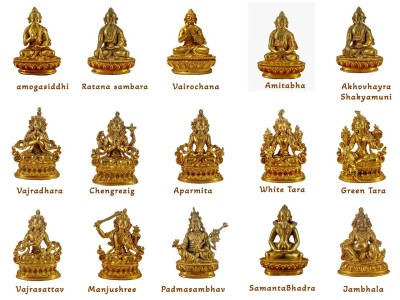
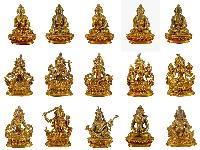

 Dorje Drolo Set, Buddhist Handmade Statue,
Dorje Drolo Set, Buddhist Handmade Statue,  Dorje Drolo Set, Buddhist Handmade Statue,
Dorje Drolo Set, Buddhist Handmade Statue,  of 21 Tara Set
of 21 Tara Set  of 21 Tara Set
of 21 Tara Set  of Buddhist Statue
of Buddhist Statue 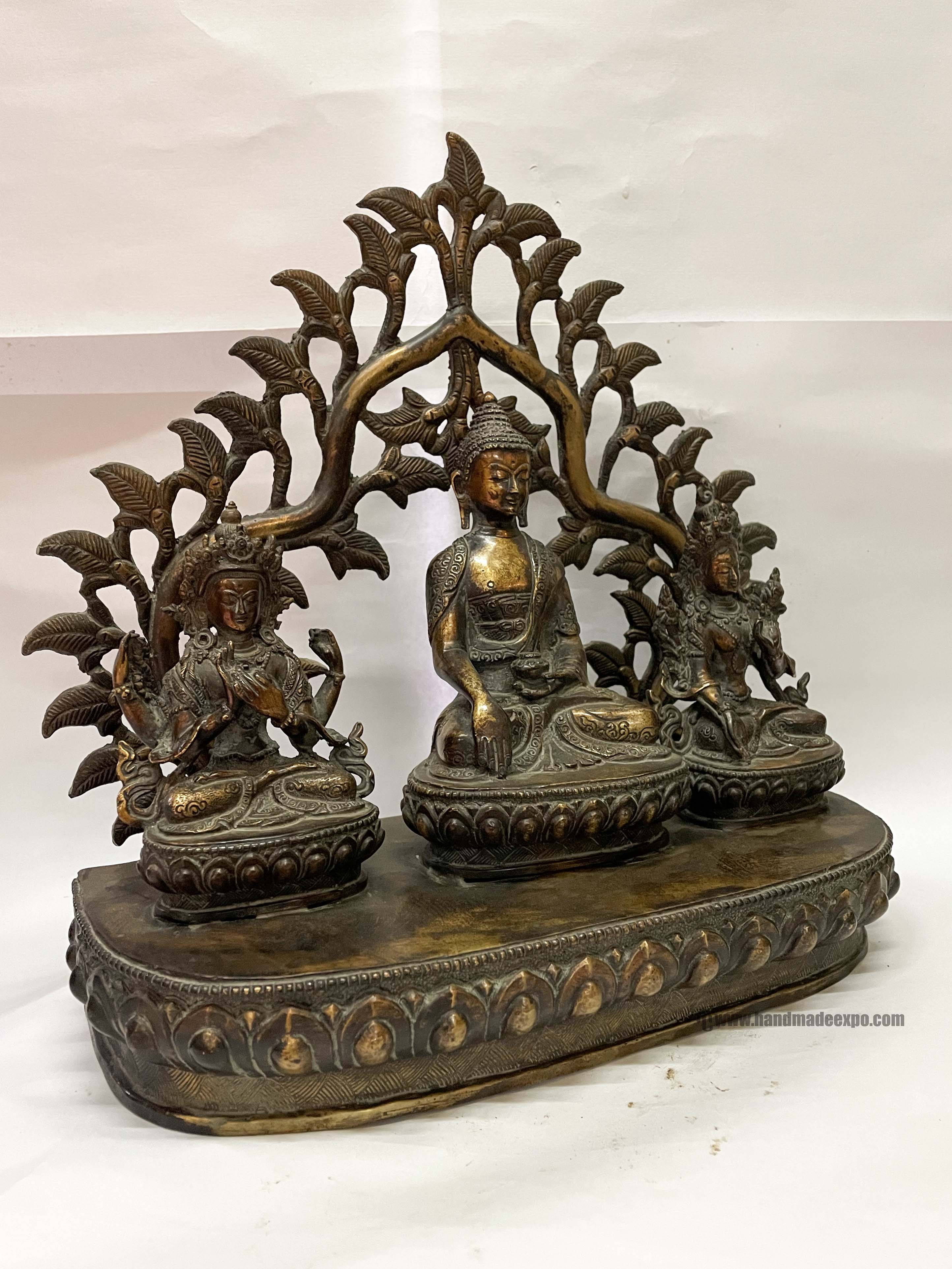 of Buddhist Statue
of Buddhist Statue  of Shakyamuni Buddha, Amitabha Buddha
of Shakyamuni Buddha, Amitabha Buddha  of Shakyamuni Buddha, Amitabha Buddha
of Shakyamuni Buddha, Amitabha Buddha 
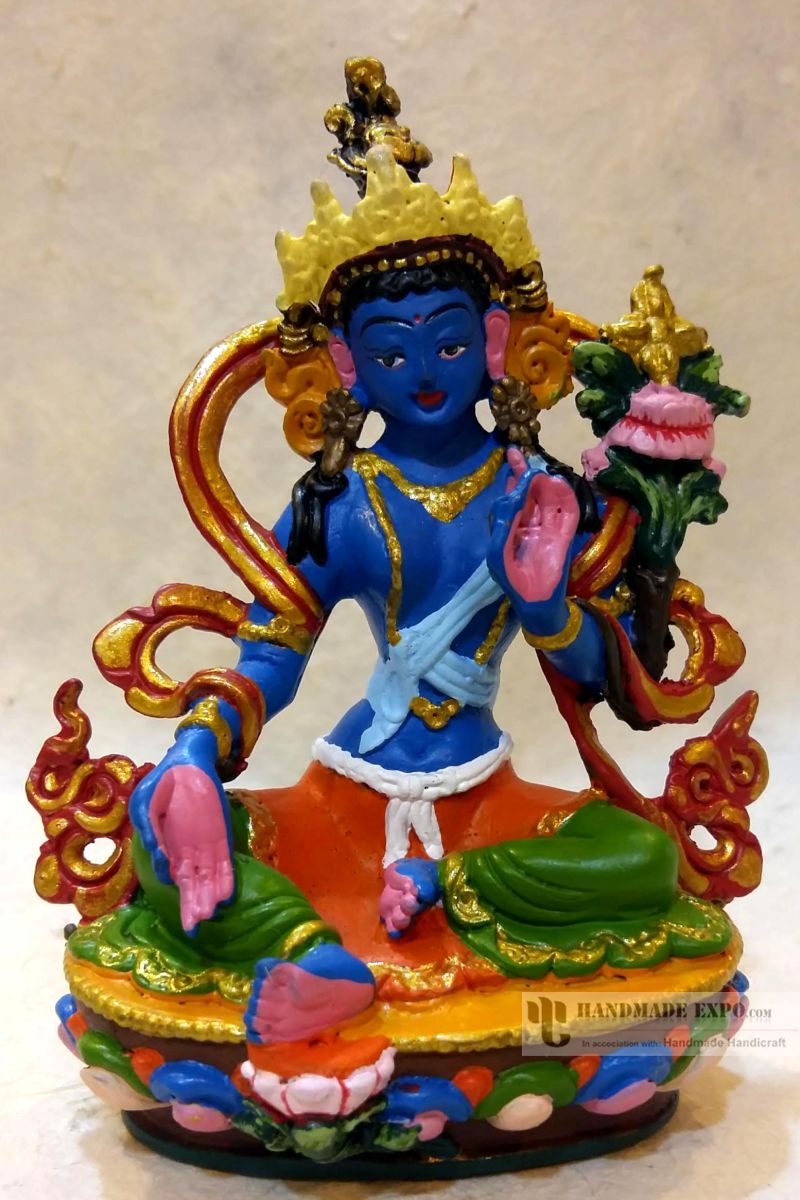
 and Gold Plated Edition, Vajradhara, Vajrasattava,tara, Manjushree, Guru, Jambhala, Samantabhadra" title="10 Essential Buddhist Bodhisattva, Copper
and Gold Plated Edition, Vajradhara, Vajrasattava,tara, Manjushree, Guru, Jambhala, Samantabhadra" title="10 Essential Buddhist Bodhisattva, Copper  of Pancha Buddha Set
of Pancha Buddha Set 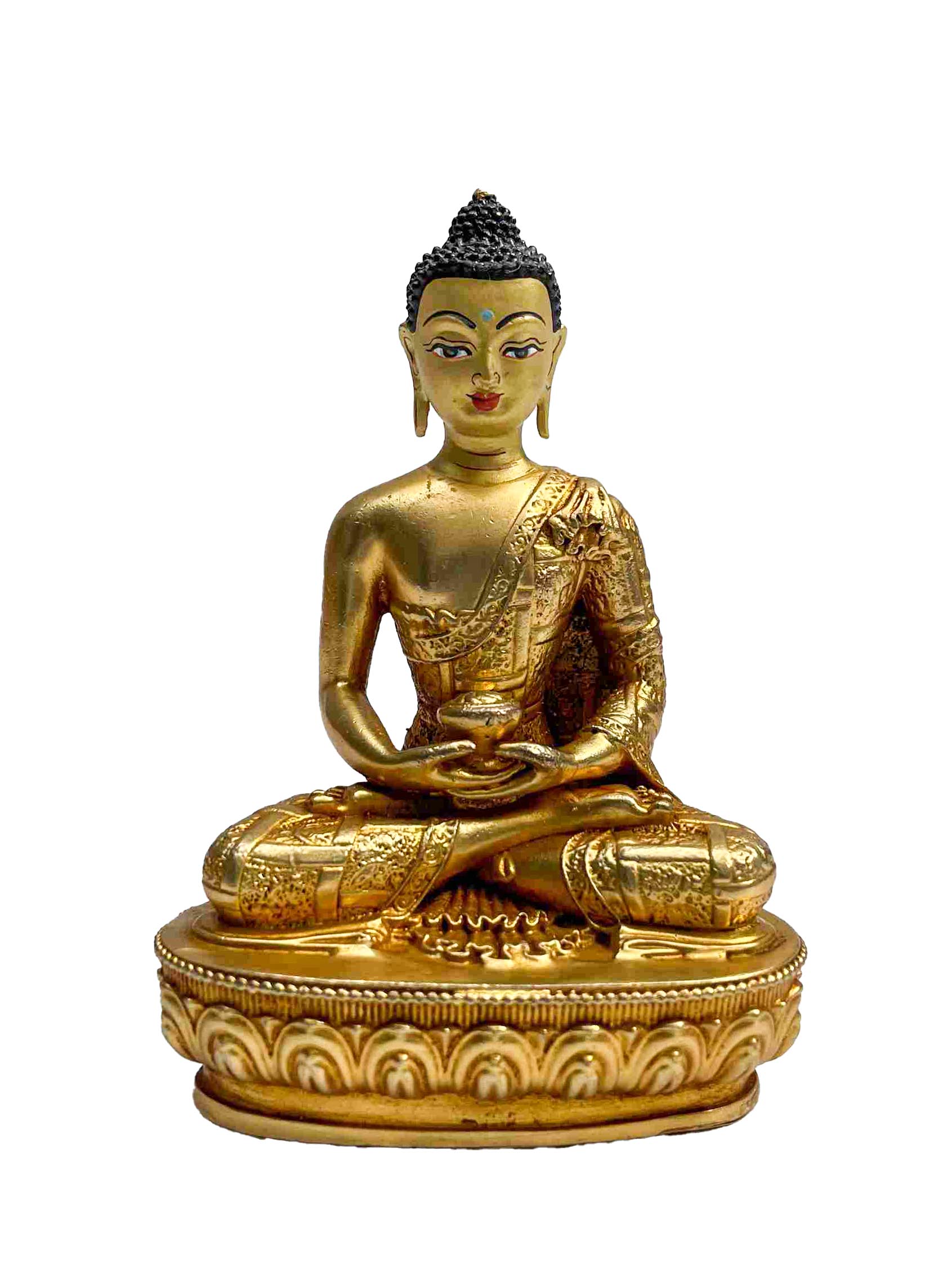 of Pancha Buddha Set
of Pancha Buddha Set  of Pancha Buddha,five Dhyani Buddha Set
of Pancha Buddha,five Dhyani Buddha Set 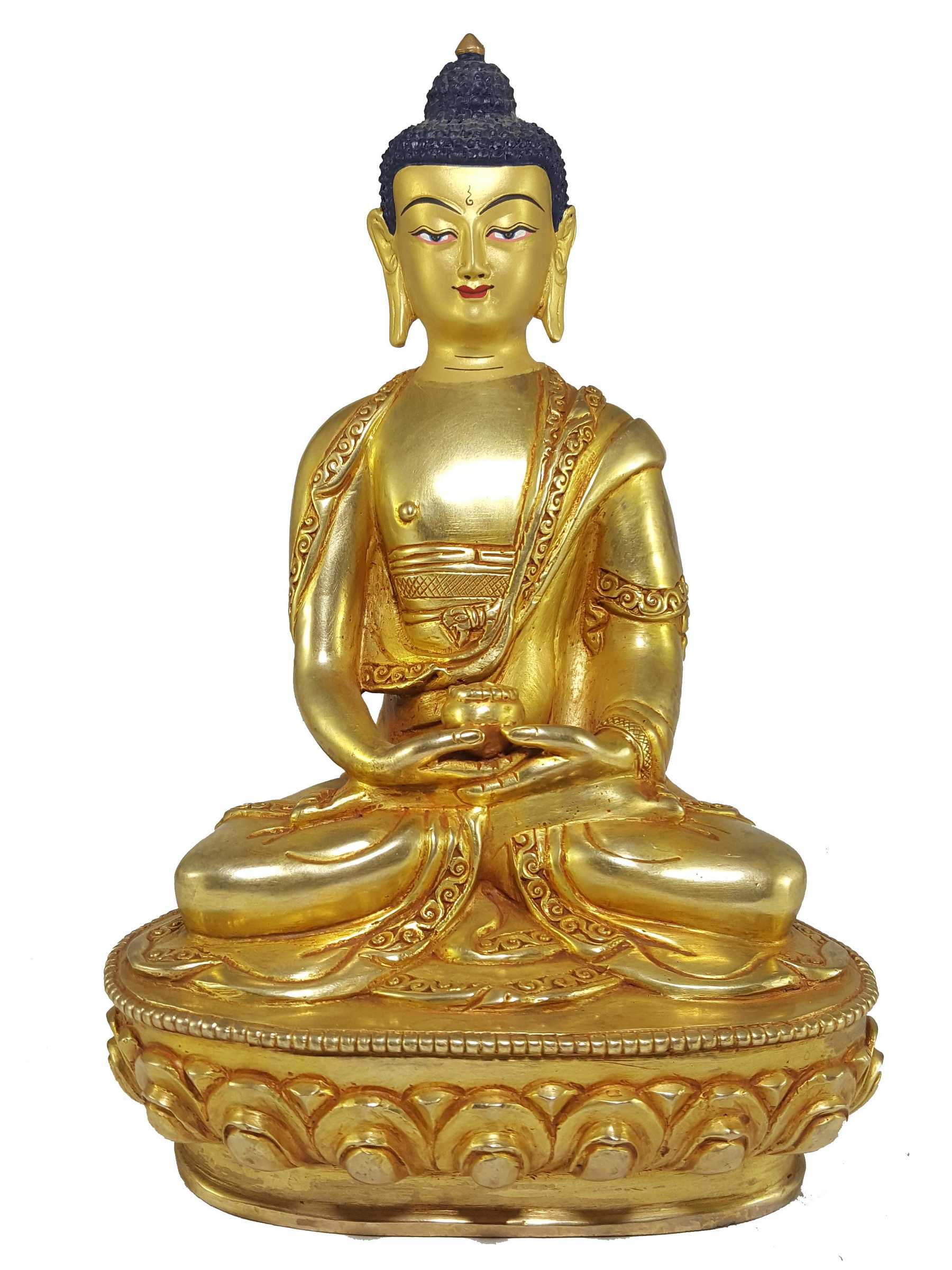 of Pancha Buddha,five Dhyani Buddha Set
of Pancha Buddha,five Dhyani Buddha Set  Sakyapa Set, Buddhist Handmade Statue,
Sakyapa Set, Buddhist Handmade Statue,  Sakyapa Set, Buddhist Handmade Statue,
Sakyapa Set, Buddhist Handmade Statue,  of Shakyamuni Buddha, Amitabha Buddha
of Shakyamuni Buddha, Amitabha Buddha 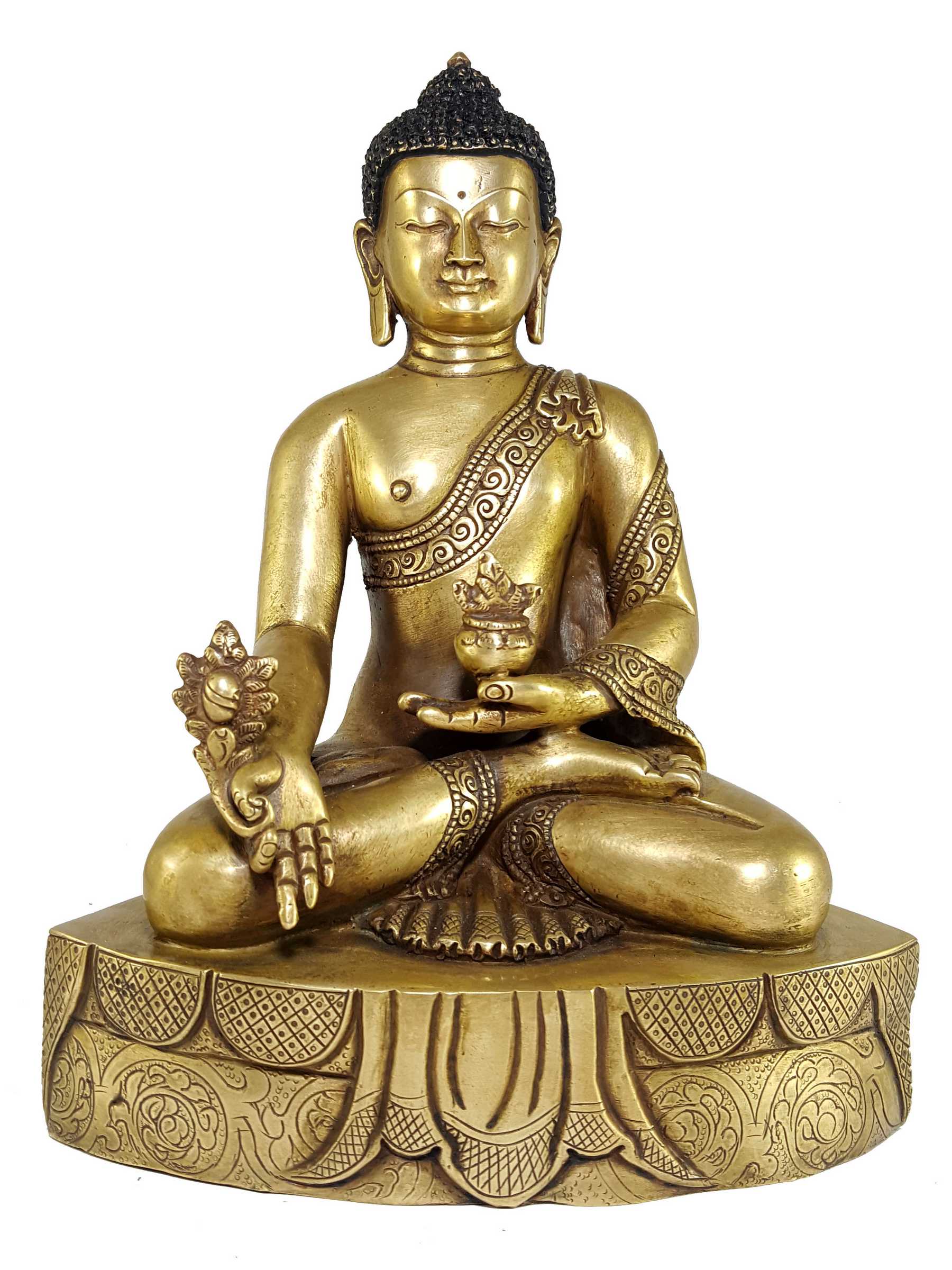 of Shakyamuni Buddha, Amitabha Buddha
of Shakyamuni Buddha, Amitabha Buddha